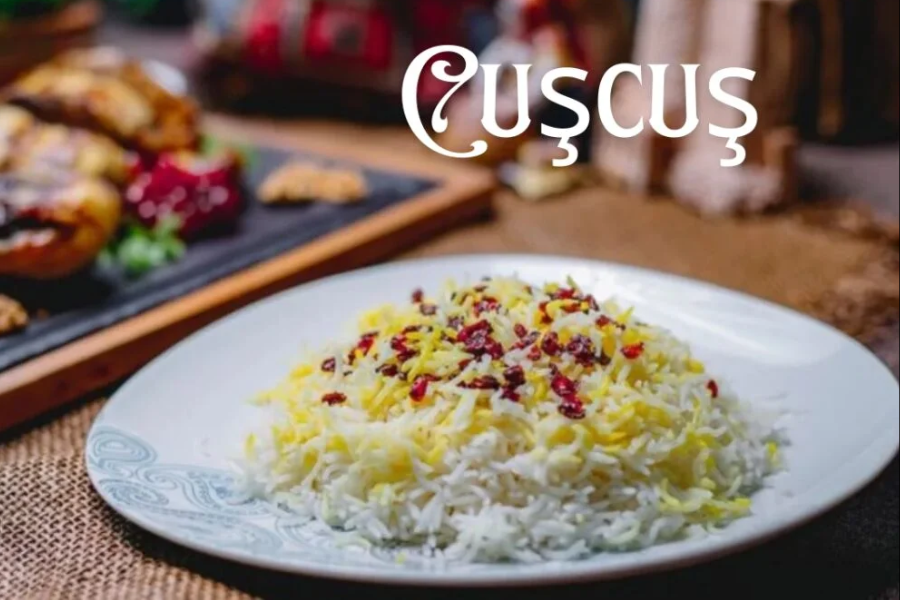Discovering the Culinary Delight of Cuşcuş: From North Africa to Your Kitchen
In the rich culinary traditions of North Africa, Cuşcuş stands out as a dish that has not only survived the test of time but has also made its way into kitchens worldwide. This versatile and culturally rich dish has become a beloved favorite, appealing to both seasoned food lovers and those new to exploring global cuisines. If you’re looking to add something special to your meals, Cuşcuş is a delightful choice that brings both history and flavor to your table.
In this blog, we’ll delve into the fascinating history of Cuşcuş, its cultural significance, and how this simple yet extraordinary dish has evolved. We’ll also share tips on how you can make Cuşcuş a part of your culinary routine, offering a unique and flavorful experience that’s easy to enjoy.
The Journey of Cuşcuş: From Humble Beginnings to Global Fame
Cuşcuş traces its origins back to the Berber people of North Africa, with its history stretching as far back as the 11th to 13th centuries. This dish quickly became a staple in the Maghreb region, which includes Algeria, Morocco, and Tunisia. The name “Cuşcuş” is believed to come from the Berber word “seksu,” meaning “well-rolled” or “rounded,” reflecting the traditional method of preparation.
Originally a simple, everyday food for the Berbers, Cuşcuş gradually spread throughout North Africa and later into Europe, carried by the Moors. Over time, each region has put its own unique spin on Cuşcuş, showcasing its adaptability and endless possibilities for culinary creativity.
Cuşcuş in Culture: More Than Just a Meal
In North African culture, Cuşcuş is more than just a dish—it’s a symbol of togetherness and celebration. It’s often prepared for special occasions like weddings, religious holidays, and family gatherings. The process of making Cuşcuş is often a communal activity, involving multiple family members working together, which strengthens social bonds.
Beyond its role in daily sustenance, Cuşcuş is associated with hospitality and generosity. Serving Cuşcuş is considered a gesture of goodwill, symbolizing abundance and prosperity. In many ways, sharing Cuşcuş is about more than feeding the body; it’s about nourishing the soul and fostering connections.
Ingredients and Simple Preparation Techniques
At its core, Cuşcuş is made from semolina wheat, which is mixed with water to form small grains. These grains are then steamed over a pot of simmering stew, allowing them to absorb the rich flavors. While traditional Cuşcuş uses semolina, variations using grains like pearl millet, barley, or cornmeal are also common, catering to different tastes and dietary needs.
The beauty of Cuşcuş lies in its simplicity and versatility. It can be paired with a wide variety of ingredients, including vegetables, meats, and fish, allowing you to tailor the dish to your preferences. There are even sweet versions of Cuşcuş, incorporating dried fruits and nuts for a delightful twist.
Regional Varieties of Cuşcuş: A World of Flavors
Across North Africa and beyond, Cuşcuş is prepared in many different ways, each with its own unique flair. In Morocco, Cuşcuş is often served with a vibrant seven-vegetable stew, while in Algeria, it might be paired with lamb or chicken and spiced with saffron and cinnamon.
Tunisian Cuşcuş is known for its bold, spicy flavors, often enhanced with harissa. These regional differences highlight the versatility of Cuşcuş, showing how it can adapt to various culinary traditions while maintaining its core identity.
Nutritional Benefits of Cuşcuş: A Healthy Choice
Cuşcuş isn’t just delicious; it’s also packed with nutrients. It’s a great source of carbohydrates, providing energy to keep you going throughout the day. High in fiber, Cuşcuş aids in digestion and helps you feel full longer, making it a smart choice for those looking to manage their weight.
Cuşcuş is also rich in essential vitamins and minerals, such as selenium, magnesium, and B vitamins, all of which contribute to overall health and well-being. Incorporating Cuşcuş into your diet is an easy way to enjoy a nutritious and satisfying meal.
Cuşcuş in Today’s Kitchens: A Modern Twist on a Classic Dish
In contemporary cooking, Cuşcuş has become a favorite ingredient for both home cooks and professional chefs. Its ability to absorb flavors makes it an ideal base for a variety of dishes, from hearty salads to elegant main courses. Whether you’re preparing a casual family meal or hosting a sophisticated dinner party, Cuşcuş is a versatile choice that can elevate any occasion.
Modern chefs often experiment with Cuşcuş, blending traditional methods with new and exciting flavors. Whether it’s a fusion dish with Asian influences or a plant-based creation, Cuşcuş continues to inspire culinary innovation.
Tips for Perfect Cuşcuş Every Time
Getting Cuşcuş just right takes a bit of practice, but the results are worth it. Start by using a large, shallow bowl to spread the grains evenly. This ensures even cooking and prevents clumping. When steaming, be careful not to overcook the grains—they should remain light and fluffy. A touch of olive oil and a pinch of salt can enhance the flavor, but don’t be afraid to get creative with spices and herbs that suit your taste.
Pairing Cuşcuş with Global Flavors
Cuşcuş is incredibly adaptable and can be paired with a variety of flavors from around the world. In Mediterranean cuisine, it’s often served with grilled vegetables and feta cheese, while a Middle Eastern twist might include spiced lamb and tzatziki. For an Asian-inspired dish, try Cuşcuş with stir-fried vegetables and soy-glazed tofu. The possibilities are endless, making Cuşcuş a fun and versatile addition to any meal.
Host a Memorable Cuşcuş-Themed Dinner
If you’re looking to impress your guests, why not host a Cuşcuş-themed dinner party? Set the mood with colorful decor inspired by North African culture and offer a variety of Cuşcuş dishes that showcase different flavors and ingredients. Complement the meal with traditional beverages like mint tea or Moroccan wine to create a truly immersive experience.
Cuşcuş for Every Dietary Need
Cuşcuş can easily be adapted to suit various dietary preferences and restrictions. For those who are gluten-free, consider using cornmeal or gluten-free grains. Vegetarians can enjoy Cuşcuş with roasted vegetables, legumes, and plant-based proteins. Even those on a low-carb diet can incorporate Cuşcuş in moderation, pairing it with non-starchy vegetables for a balanced meal.
Beyond the Dinner Table: Sweet Cuşcuş Creations
While Cuşcuş is often enjoyed as a savory dish, it can also be transformed into a delightful dessert. Try making a Cuşcuş pudding with milk, honey, and cinnamon, or add dried fruits and nuts for a satisfying treat. Cuşcuş can even be used in baking, adding a unique texture to cakes and pastries. The only limit is your imagination!
Conclusion
Cuşcuş is more than just a dish; it’s a culinary gem that has traveled from the heart of North Africa to kitchens around the world. Its rich history, cultural significance, and endless adaptability make it a beloved favorite that continues to inspire and delight. Whether you’re exploring traditional recipes or experimenting with new flavors, Cuşcuş offers a world of possibilities for creativity and enjoyment.
By incorporating Cuşcuş into your meals, you’re not only celebrating its diverse heritage but also discovering a delicious way to connect with others through food. For those eager to learn more, consider joining a cooking class or exploring cookbooks dedicated to this remarkable dish. Happy cooking!
Stay in touch to get more news & updates on Forbes Insta!






